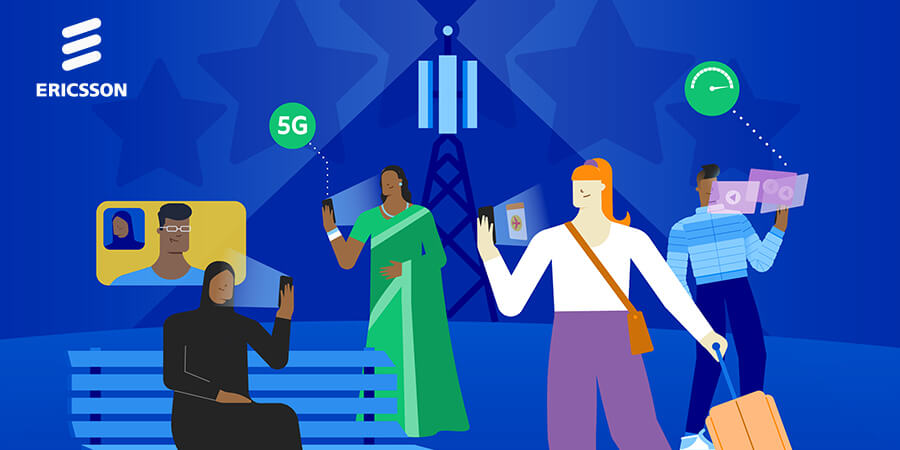Over 37,000 consumers in 28 countries were interviewed during May and June 2023 for the latest Ericsson ConsumerLab Report. The research scope is reflective of the opinions of about 1.5 billion consumers, including 650 million 5G users.
One-in-five 5G smartphone users seeking differentiated 5G service experiences, such as quality of service, for demanding applications are willing to pay communications service providers (CSPs) a premium of up to 11% to enjoy the value-added connectivity, as per the research.
The satisfaction and user-loyalty-focused report - called 5G Value: Turning Performance into Value - highlights the CSP business case potential for 5G as growing number of subscribers around the world express increased satisfaction with 5G.
It also reveals that unsatisfactory 5G connectivity experiences at key locations such as stadiums, entertainment arenas and airports can make customers up to three times more likely to switch communications service providers.
The comprehensive research - which reflects the views of an estimated 1.5 billion consumers globally, including about 650 million 5G customers - is part of an Ericsson research series which has tracked the evolution of the 5G consumer market since 2019.
The research also shows that the factors influencing consumer satisfaction are themselves changing - moving primarily from 5G geographical coverage considerations to more application-experience-based metrics such as video streaming quality, mobile gaming/video calling experience, and 5G speed consistency - especially among early 5G adopters.
Jasmeet Singh Sethi, head of Ericsson ConsumerLab, says about 37% of 5G consumers polled believe that increased data allowances in their 5G plans would justify premium rate charges from CSPs.
“Interestingly, about one-in-five 5G smartphone users polled expressed a clear preference for differentiated quality of service connectivity. Rather than settling for generic, best-effort 5G performance, these users are actively seeking elevated and consistent network performance, especially tailored for demanding applications and specific key locations. The research shows they are willing to pay a 11% premium if their service provider offers it.”
Sethi said another clear 5G customer loyalty indicator related to consumers’ experiences of the connectivity at busy locations and major event venues.
“This is where a lot of 5G consumers clearly expect 5G to be able to give them a value-add experience - for example to enhance a night out at a major entertainment venue, or when traveling through an airport. If their experience in such locations is poor, they are three times more likely to switch to a provider who can provide that optimum 5G experience.”
Ericsson’s Chief Technology Officer (CTO), Erik Ekudden, says the report confirms the potential of network Application Programming Interfaces (APIs) for developers, as a means for communications service providers to offer enhanced network experiences that customers are willing to pay for.
“In the era of 5G, network Application Programming Interfaces are business interfaces for developers and application providers giving them access to network capabilities via familiar easy to use interfaces,” he says. “As we observe consumers expressing a willingness to pay for new functionality and differentiated quality of service, it's clear that these APIs are industry changing. They foster an environment where developers get access to 5G capabilities to deliver distinct premium experiences. For communication service providers APIs unlock new revenues by unveiling the inherent value of their networks.”
Other Findings
The report addresses how 5G user engagement, and consequently mobile data consumption, is driven by the bundling of 5G rich enhanced video - such as 4K, 360-degree experiences, multi-view videos and augmented reality (AR) applications - on 5G plans.
On average, 5G users report a 47% increase in time spent on enhanced video formats over the past two years. The number of daily augmented reality (AR) application users has doubled since the end of 2020.
The Report Identifies Four Trends
- 5G network satisfaction drivers are evolving beyond coverage. New 5G users still value 5G outdoor coverage and speed. In markets where 5G population coverage exceeds 80%, long-time users prioritize video quality and upload speeds for the apps they use, reflecting evolving expectations.
- 5G is reshaping video streaming and augmented reality (AR) usage. Emerging formats are increasingly driving usage and 5G data consumption as service providers bundle rich media content into 5G plans.
- 5G performance at key locations influences consumer loyalty. About 17% of consumers across 28 markets have switched service providers since the launch of 5G, driven primarily by issues with 5G network performance. A significant influence is 5G experience in critical locations, such as arenas and airports.
- 5G consumers will pay premiums for differentiated connectivity. Twenty percent of smartphone users expect differentiated 5G connectivity. These individuals value premium connectivity and are willing to pay a premium of up to 11% for a 5G plan that ensures elevated network performance.
